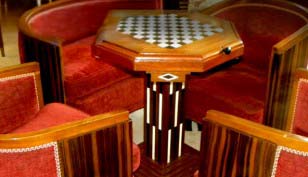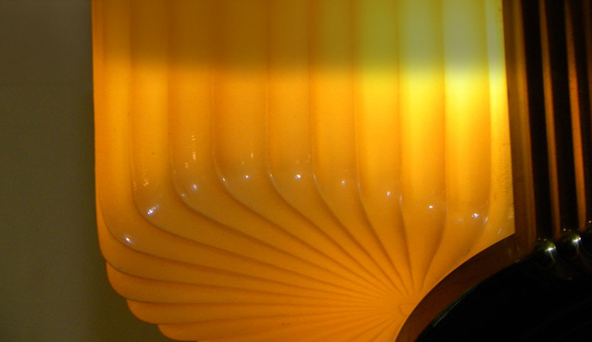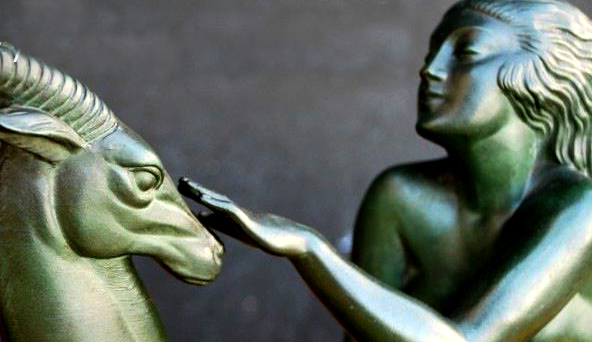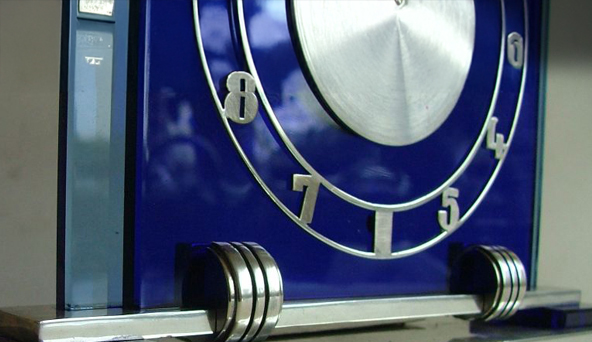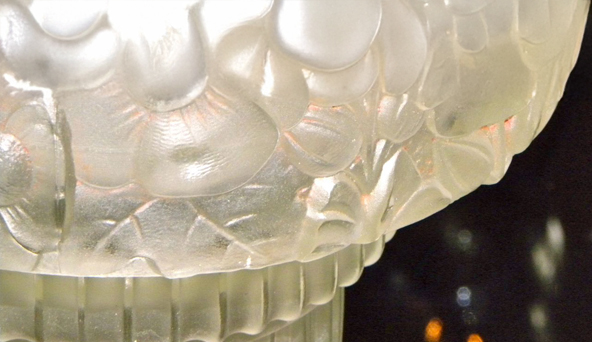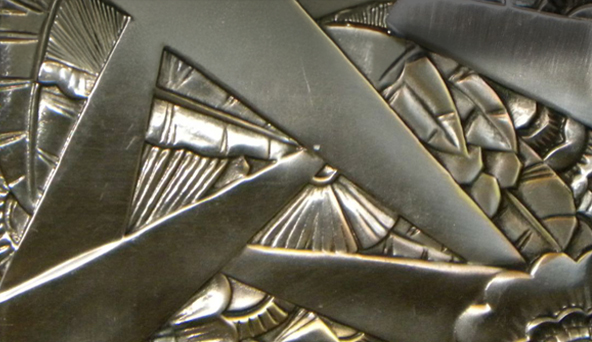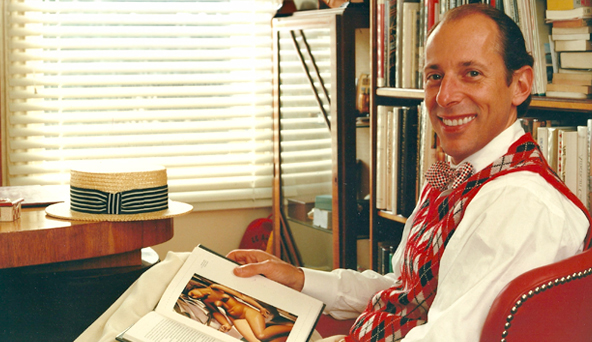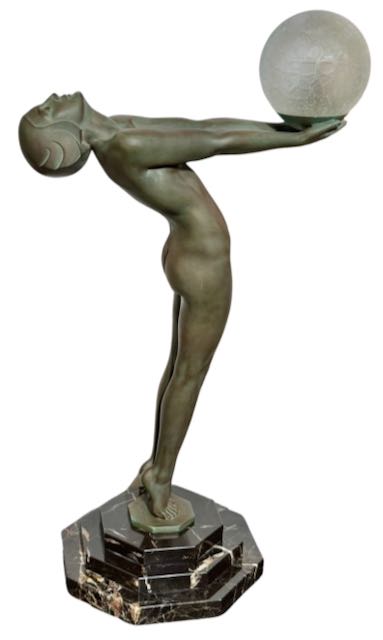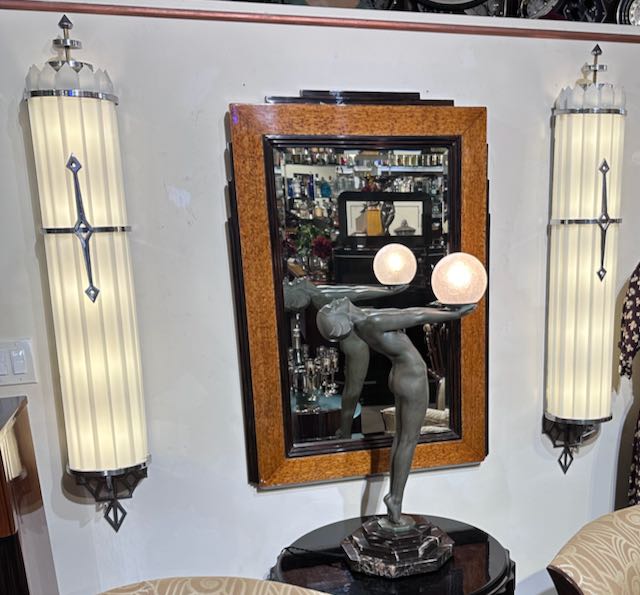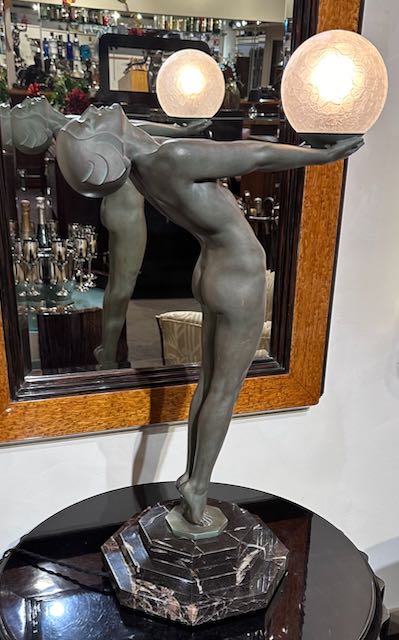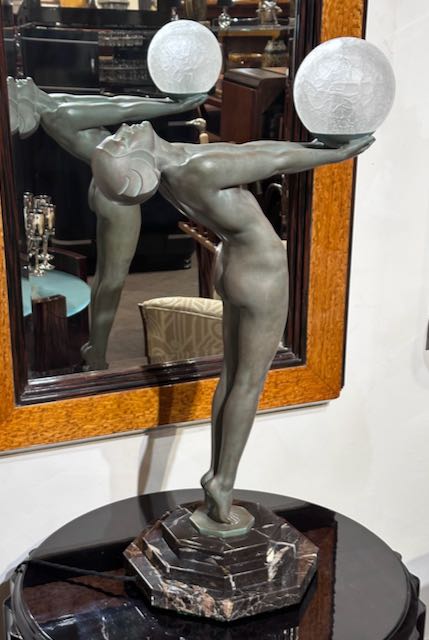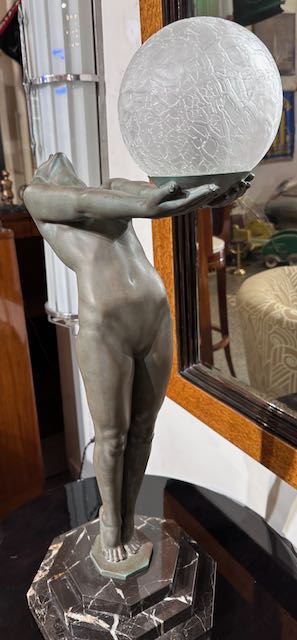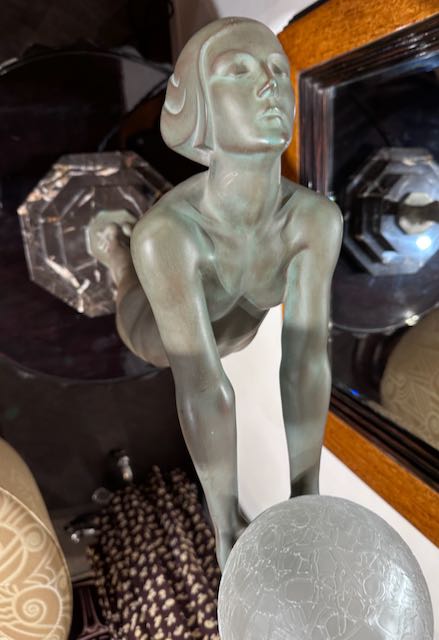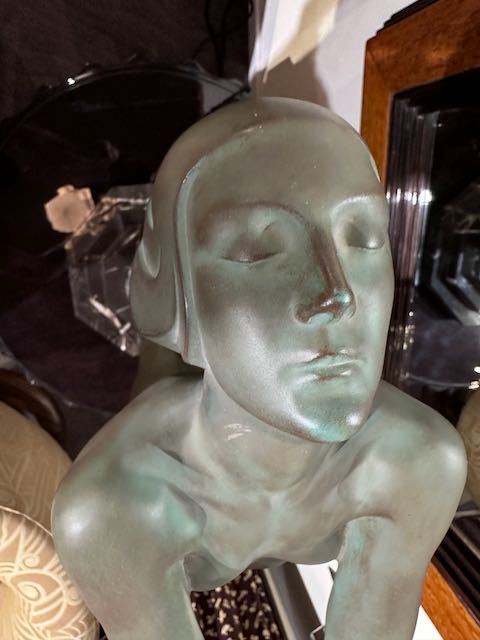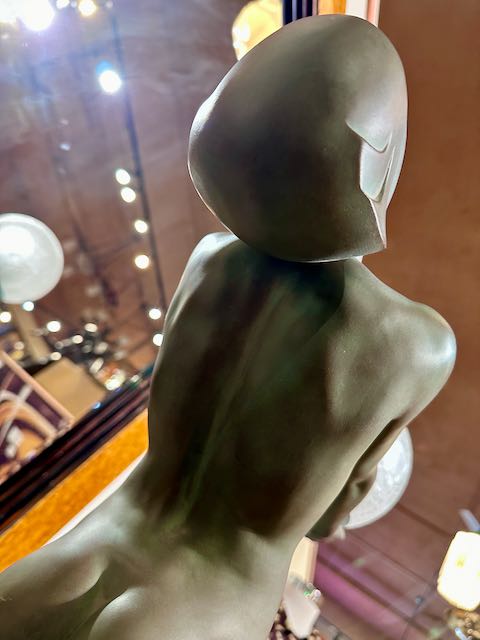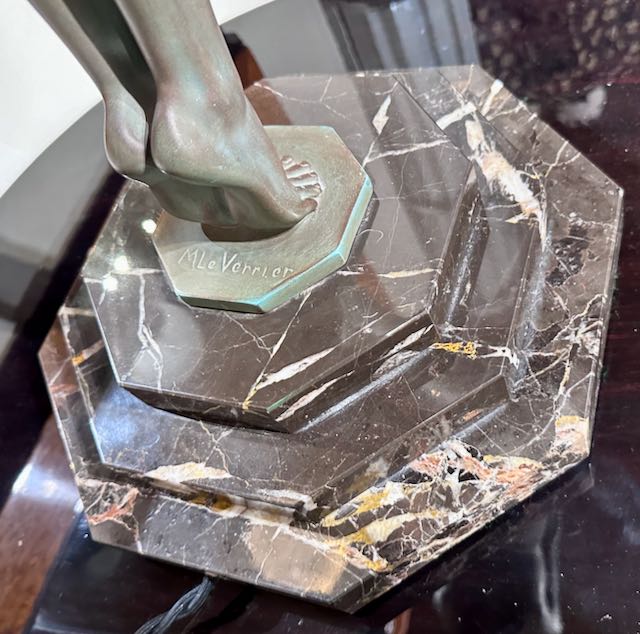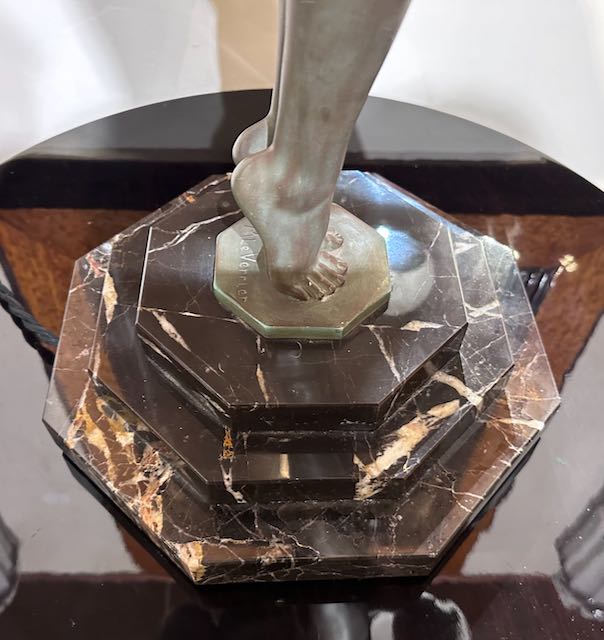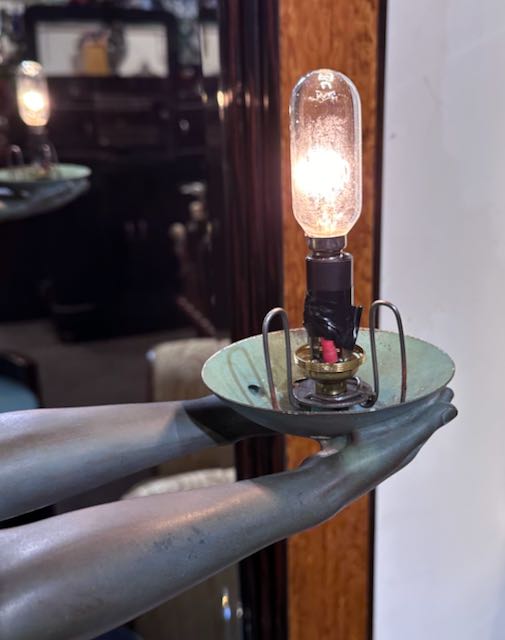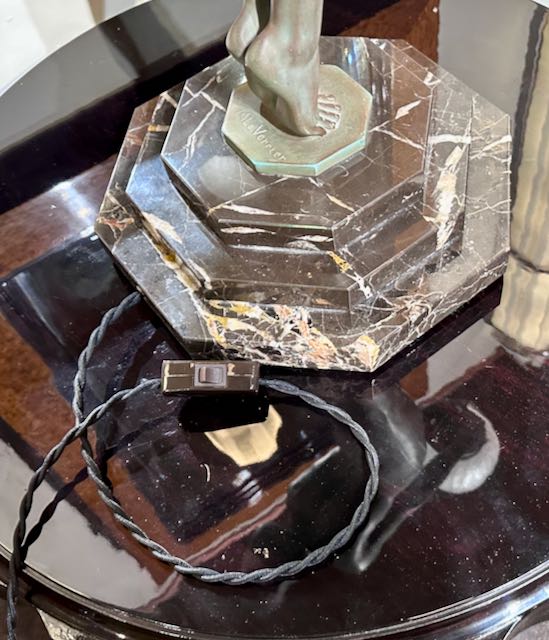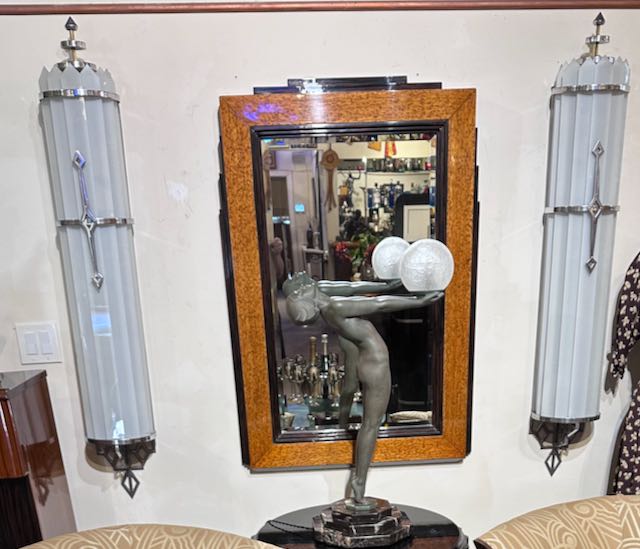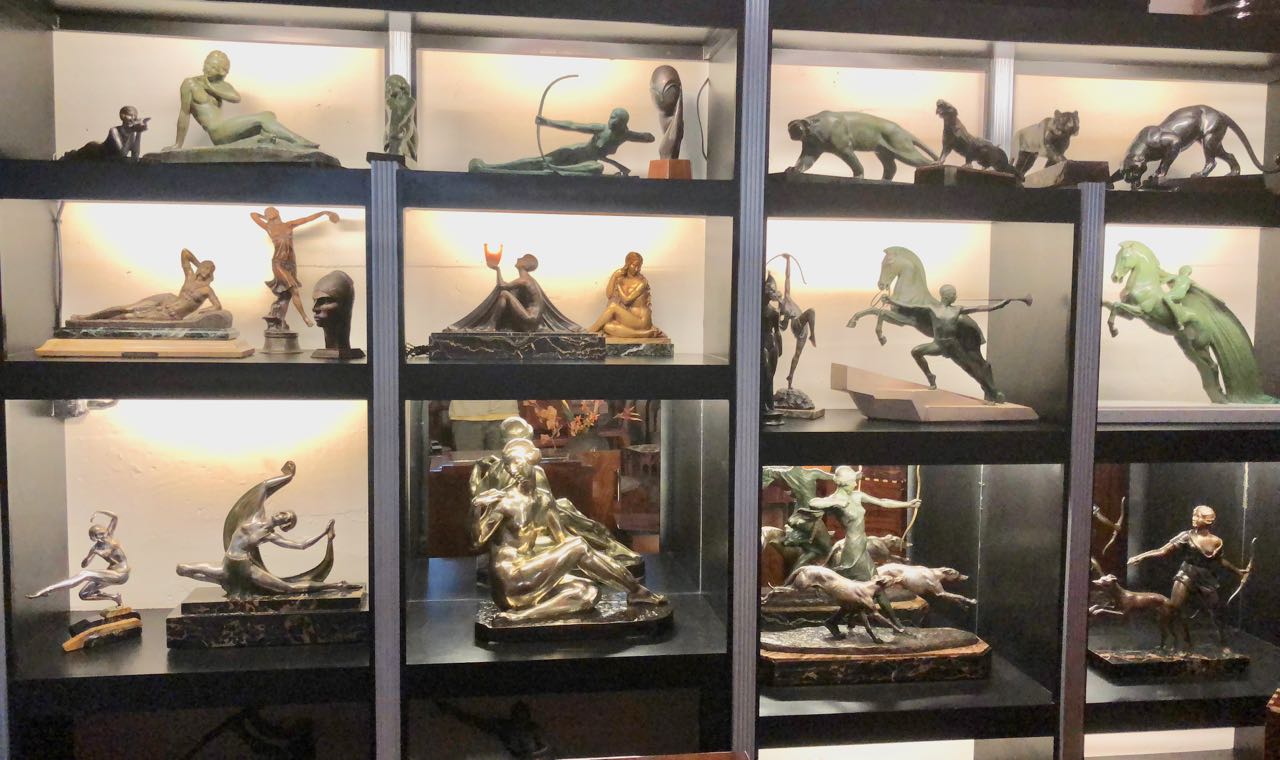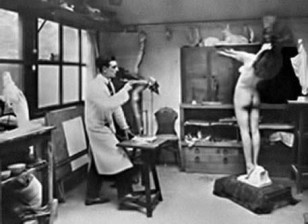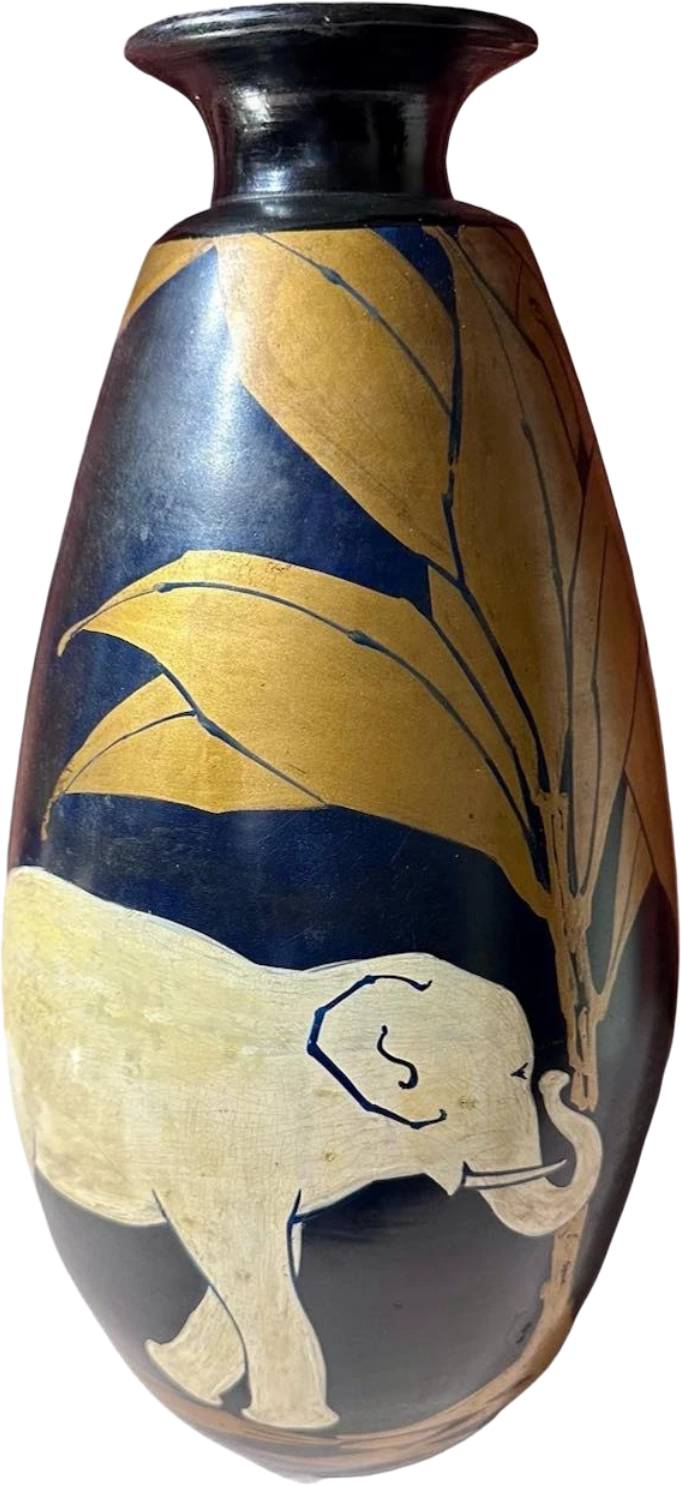Art & Statues
Art Deco Light Statue by Max Le Verrier Iconic Clarte Large Rare Vintage Model
Art Deco Light Statue by Max Le Verrier called Clarte. Signed and original, this rare statue was designed in 1928 by the famous French artist Max Le Verrier. It also has the Le Verrier foundry stamp next to his name. This piece has a very unique special glass connection; it screws into place with a fitted glass addition and threaded connection as part of the socket connection. This makes this Clarte the rarest version we have seen in over 30 years. The condition is immaculate, and the verdigris patina is near perfect.
Le Verrier is one of the greatest sculptors of the ART DECO era. The sculpture offered here is his most renowned creation. This famous piece is named “Clarté,” the nude lady lamp, which came in 4 sizes – the largest being life-sized (The large one can be seen in the Lutetia Hotel lobby in Paris). This one stands approximately 21.5″ T to the head and 26″ T to the original top of the “brain glass,” with her arms extending to 14″. Also, she is standing on the original stepped black marble base. This is an original piece, not a later reproduction or copy. (The family still owns the original molds, and they are making some of Le Verrier’s statue designs, which can be found from time to time in the market)—completed from a quality rarely found in this kind of production. It is immaculate, with an original-style cloth wire cord, switch, and plug.
About Max Le Verrier:
Max Le Verrier – Icon of Art Deco Sculpture and Creator of Clarté
Max Le Verrier (1891–1973) was a defining figure of the Art Deco movement, renowned for his dynamic bronze and spelter sculptures and his iconic female figures. Born in Neuilly-sur-Seine, just outside Paris, Le Verrier demonstrated artistic talent from a young age. After serving in the French army during World War I, he pursued formal training at the École des Beaux-Arts in Geneva, where he formed lasting friendships with fellow sculptors Pierre Le Faguays and Marcel Bouraine—artists with whom he would collaborate for decades.
Returning to Paris in 1919, Le Verrier opened his studio and debuted his first notable sculpture, Le Pélican, marking the beginning of a celebrated series of stylized animal forms. In 1925, he received a gold medal at the Exposition Internationale des Arts Décoratifs et Industriels Modernes in Paris—the pivotal exhibition that gave the Art Deco movement its name.
A year later, in 1926, he established his foundry, which became a cornerstone of French sculpture during the interwar period. Le Verrier not only cast his pieces but also produced works for prominent artists, including Pierre Le Faguays, Marcel Bouraine, Charles, Denis, and Janle. Known for exceptional detail and innovation, Le Verrier pioneered the use of a proprietary metal alloy rather than traditional bronze, allowing for finer definition and greater affordability without compromising artistic quality.
Among his most iconic works is Clarté, a luminous female figure reaching skyward with a spherical light in hand—a powerful symbol of enlightenment and modernism. Sculpted with the idealized elegance and athleticism characteristic of his female forms, Clarté exemplifies the streamlined beauty and symmetry central to Art Deco aesthetics. The piece remains one of the most recognizable and sought-after Art Deco sculptures ever created.
Le Verrier continued to produce exceptional works into the 1930s and was honored with a medal at the 1937 Paris International Exhibition. During World War II, he was imprisoned for his role in the French Resistance, but resumed work in his studio after the war and remained active until his death in 1973.
Keywords: Max Le Verrier, Clarté sculpture, Art Deco female figure, French Art Deco sculpture, Le Verrier foundry, Art Deco bronze, spelter sculpture, 1925 Exposition Internationale, Le Verrier Clarté lamp, iconic Art Deco lighting, Art Deco Paris sculptor, Pierre Le Faguays, Marcel Bouraine, interwar French sculpture, Art Deco women statues, decorative arts 1920s.
